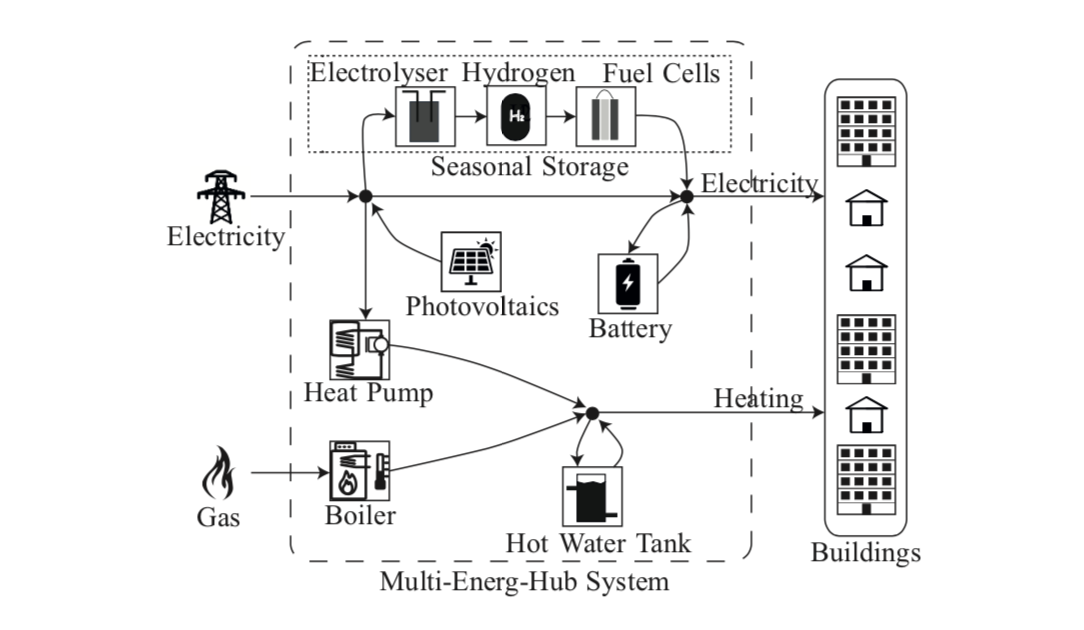In the future, many small power plants, in addition to some large ones, are likely to produce renewable energy for individual houses, housing estates and neighbourhoods or entire cities. This strategy calls for three components: firstly, energy production systems such as solar or wind power plants. Secondly, conversion plants such as heat pumps, electrolytic cells or fuel cells. The latter two store energy in the form of hydrogen: electrolytic cells produce hydrogen using electricity, while fuel cells use the opposite process. And thirdly, energy storage systems, such as batteries, hot water storage tanks or hydrogen storage tanks.
However, installing these systems in not sufficient. They also need to interact in the best possible way: not only must these systems, also known as multi-energy hubs, be interlinked, but also controlled in a concerted manner. In addition, an energy hub must coordinate the connection to external energy sources such as the public power grid: when does the system feed excess electricity into the grid and when does it draw electricity? When do the buildings in the system need additional gas or other fuels to produce heat or hot water? The system must answer these questions according to the given circumstances and control the installation accordingly. In addition, it must be able to react very quickly to changes in energy production or consumption. This requires a sophisticated control and monitoring mechanism. The group leaders Turhan Demiray and Roy Smith and their research teams at the ETH Zurich have developed such a mechanism in a subproject of the joint project "Sustainable Decentralised Power Generation".
In a first step, the investigators created a mathematical computer model of a complex multi-energy hub. A photovoltaic system in the hub produces power that is either consumed immediately, stored in a battery or converted into hydrogen for long-term storage. The system also includes a conventional hot water boiler, a heat pump and a hot water storage tank for heating.













